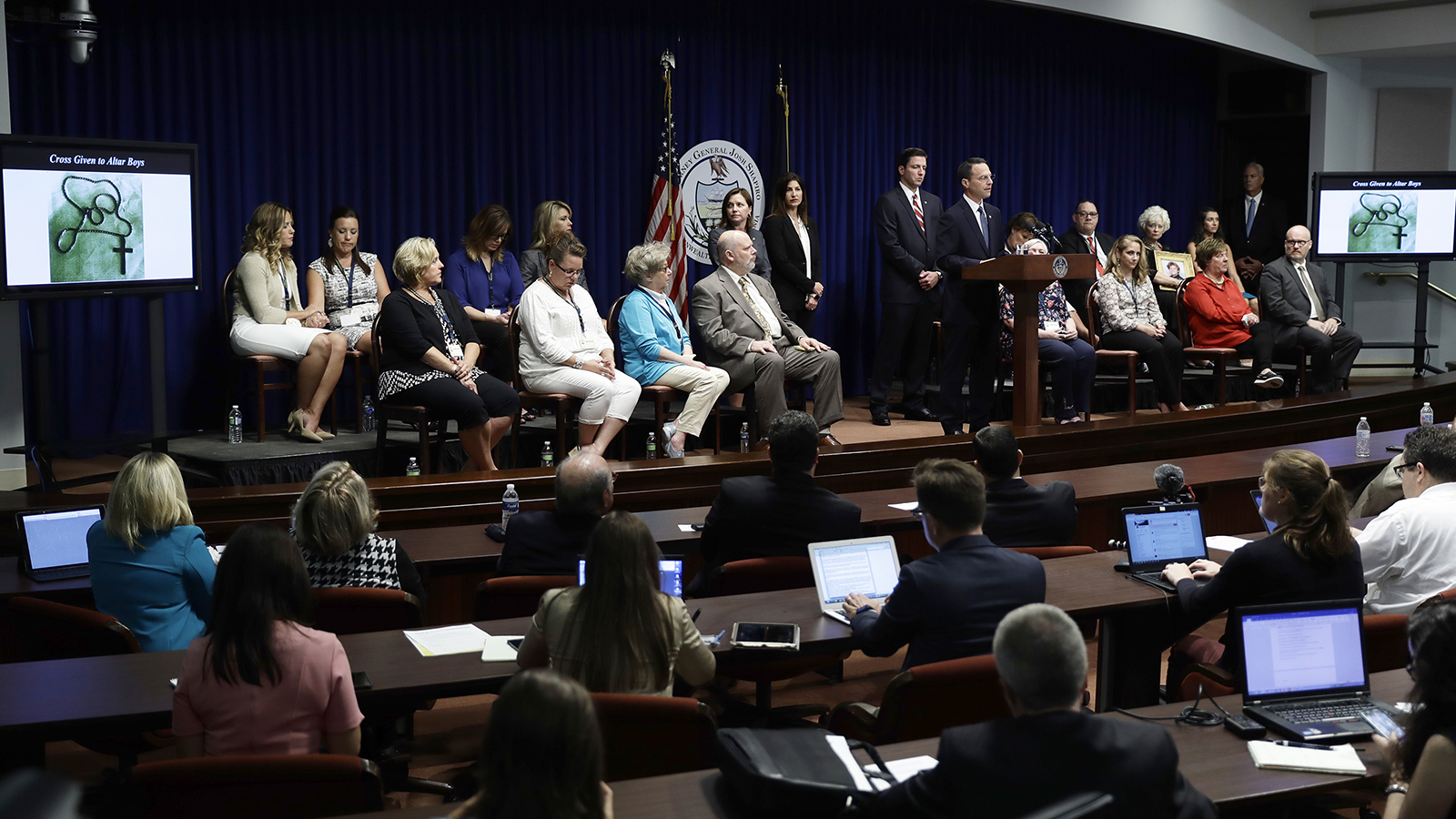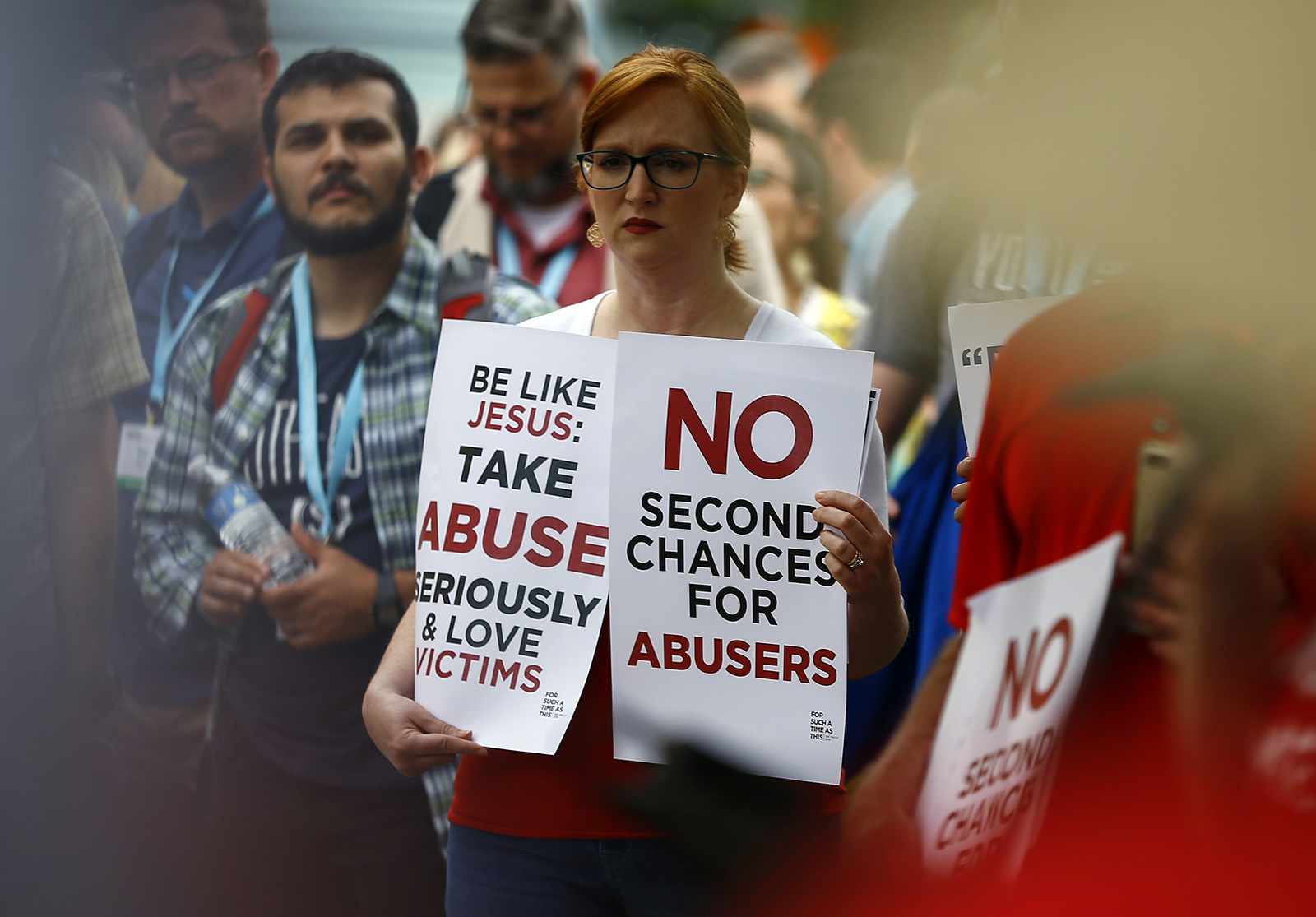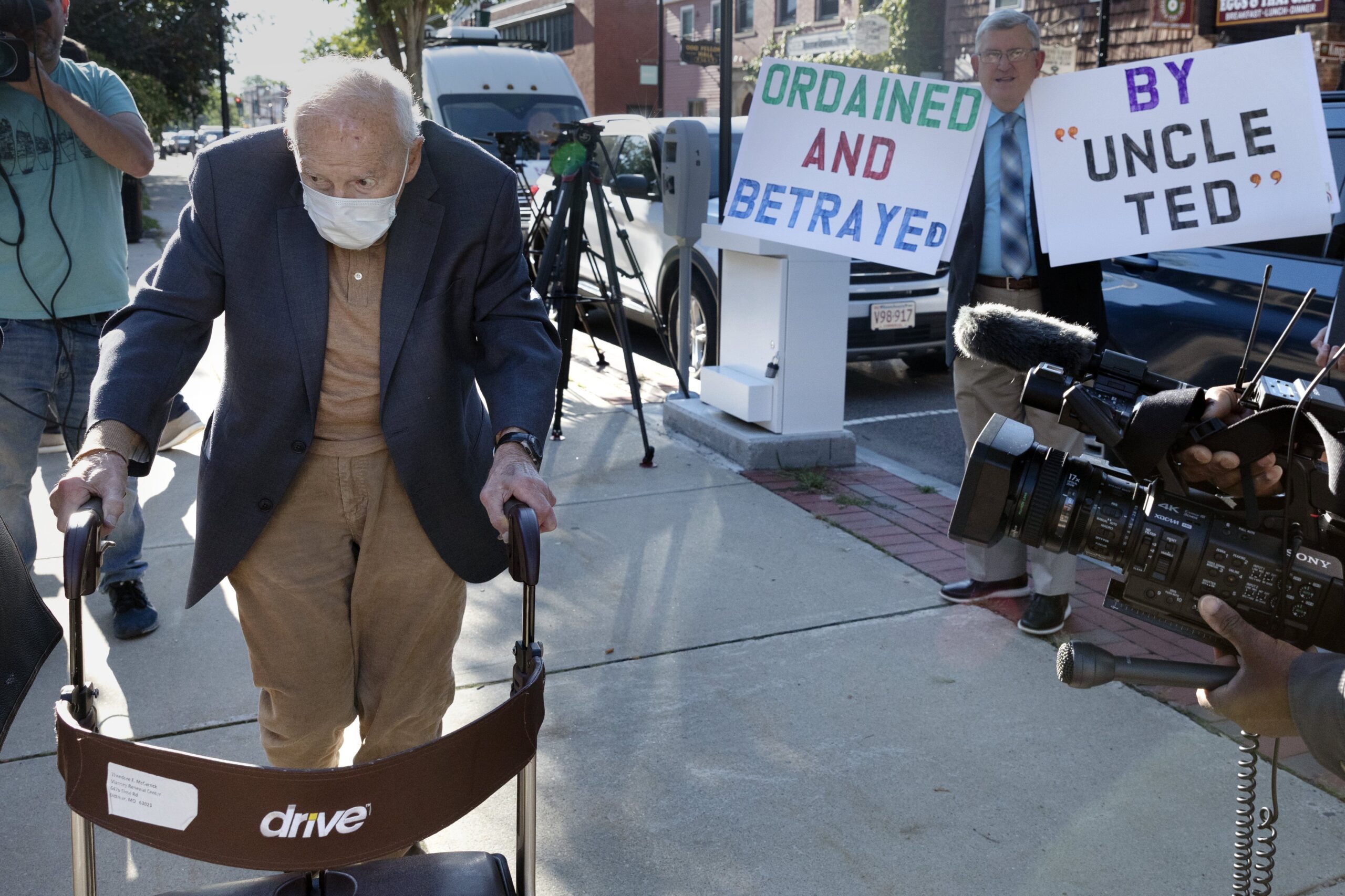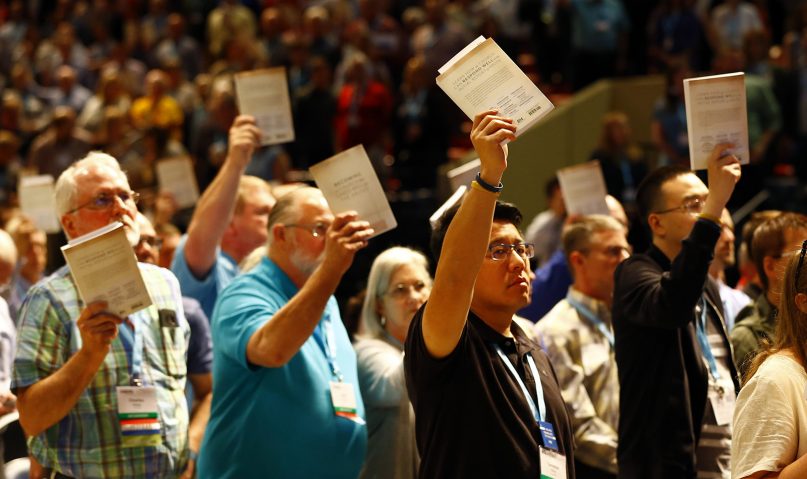(RNS) — This week’s devastating report on the handling of sexual abuse by the Southern Baptist Convention invites comparison with the abuse crisis in the Roman Catholic Church, which began more than three decades ago. As considerable as the differences are between America’s two largest religious bodies (SBC: 13 million; RCC: 70 million), they betrayed their trust in much the same way.
Let’s consider the differences — and the similarities.
I. Governance
The RCC is a hierarchical church, with the pope at the top and proceeding down through cardinals, archbishops, bishops, priests, deacons and laity. The pope appoints (and can remove) the bishops but the bishops run the show in their dioceses.
RELATED: 40 years in the making: A timeline of the Southern Baptists’ sexual abuse crisis
The SBC is a network of independent churches that choose to belong but can be kicked out (disfellowshipped) by the organization on various grounds. Major decisions (including election of the the SBC president) are made by delegates, known as “messengers,” sent to an annual meeting by individual churches. Day-to-day management is in the hands of the Executive Committee.
II. Perpetrators
Most (but not all) of the accused RCC abusers have been priests — some 6,000 to date. Most (but not all) of the accused SBC abusers have been pastors and ministers — more than 700, according to the report. N.B. All Catholic priests and all SBC pastors and ministers are men. So are all their superiors.
III. Victims
Most (but not all) of the victims of RCC sexual abuse have been male: young boys and adolescents. Most (but not all) of the victims of SBC sexual abuse have been female: adolescent girls and women.

Pennsylvania Attorney General Josh Shapiro speaks during a news conference at the state Capitol in Harrisburg, Pa., on Aug. 14, 2018. A Pennsylvania grand jury’s investigation of Roman Catholic clergy sexual abuse identified more than 1,000 child victims. The people seated were some of those affected by the clergy abuse. (AP Photo/Matt Rourke)
IV. The disgrace
As awful as sexual abuse by clergy is, both crises resulted from how the abusers’ superiors protected them and allowed the abuse to continue.
Catholic bishops habitually ignored survivors and transferred offending priests to other parishes without letting parishioners know. The SBC Executive Committee habitually ignored survivors and washed its hands of all responsibility by claiming it had no authority over member churches (even as it disfellowshipped them, often for hiring female pastors or becoming open and affirming to LGBT people).
V. The rationales
The avoidance of “scandal” was the big RCC rationale for covering up abuse. In Catholic moral theology, “scandal” is a technical term, defined in the Catechism as “an attitude or behavior which leads another to do evil.” Here, the idea was that making an abusers’ behavior public would lead the laity astray.
In the SBC, the rationale for not addressing pastoral abuse was largely that it would detract from the Cooperative Program — the missionary enterprise dedicated to fulfilling Jesus’ “Great Commission” to preach the gospel throughout the world.
VI. The imperative
Lawyers for the SBC Executive Committee, no less than for Catholic dioceses, saw it as their duty to protect their clients against lawsuits seeking monetary damages. Where the dioceses were on the hook for their priests’ misbehavior, the Executive Committee, with no fiduciary authority over member churches, wanted to be sure that its hands appeared as clean as possible.

A woman holds signs about abuse during a rally outside the annual meeting of the Southern Baptist Convention at the Birmingham-Jefferson Convention Complex on June 11, 2019, in Birmingham, Ala. RNS photo by Butch Dill
VII. The records
Bishops kept extensive secret files on their abuse cases. The SBC Executive Committee publicly insisted that it could not keep a record of Southern Baptist abuse cases while secretly keeping one.
VIII. The investigations
Independent, semi-independent and in-house investigations of abuse were carried out by individual Catholic dioceses and under national church auspices. The SBC Executive Committee did its best to resist an investigation and when resistance became impossible, sought to have it conducted under its control. A last-minute vote by the messengers at last year’s SBC meeting in Nashville, Tennessee, made possible the fully independent investigation that resulted in this week’s report.
IX. The remedies
Over the years, Catholic dioceses have developed vetting procedures, reporting protocols and oversight boards that largely ensure that sexual abuse by priests and other church personnel is kept to a minimum and dealt with properly when it occurs. The SBC report concludes with an extensive series of recommendations, beginning with the establishment of an independent commission to oversee and implement reforms.

Former Cardinal Theodore McCarrick, left, arrives at Dedham District Court, Friday, Sept. 3, 2021, in Dedham, Mass. McCarrick, the once-powerful American prelate who was expelled from the priesthood for sexual abuse, pleaded not guilty Friday to sexually assaulting a 16-year-old boy during a wedding reception in Massachusetts nearly 50 years ago. (AP Photo/Michael Dwyer)
RELATED: Southern Baptists’ abuse report is no call for reform. It’s a repudiation of the past 40 years.
X. The lesson
You might think the SBC Executive Committee would have learned a lesson from the bitter experience of their separated Catholic brethren, but no one’s ever accused Southern Baptists of being quick learners.
Moreover, the bottom line is that, unless they’re hit upside the head with a 2-by-4, religious institutions run exclusively by men will protect men from being held to account for their sexual misbehavior. That can be seen in Orthodox Judaism and The Church of Jesus Christ of Latter-day Saints as well as in the RCC and the SBC.
In the end, Catholic success in combating clergy abuse came about not just through mechanisms of reform, but through the inclusion in those mechanisms of women with authority. Go thou and do likewise, SBC.






